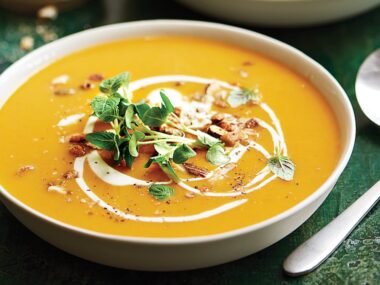Nigerian street food offers a vibrant tapestry of flavors, textures, and aromas, reflecting the rich culinary heritage of the country. From bustling city markets to quiet rural streets, vendors serve up an array of mouthwatering dishes that are not only delicious but also deeply rooted in the culture and traditions of Nigeria. In this exploration of Nigerian street food, we’ll delve into the most popular dishes, their origins, preparation methods, and the unique flavors that make them so beloved.

The Cultural Significance of Nigerian Street Food
Street food in Nigeria is more than just a quick bite to eat; it’s a social experience and a vital part of daily life. It brings people together, offering a taste of the nation’s diverse culinary traditions. Vendors often pass down their recipes through generations, preserving the authenticity and heritage of their food. The accessibility and affordability of street food also make it a staple for many Nigerians, regardless of their economic background.
Popular Nigerian Street Foods
1. Suya
Origins and Description: Suya is a spicy skewered meat, typically beef, goat, or chicken, that is marinated in a blend of spices and grilled to perfection. It originates from the Hausa people in northern Nigeria but has become a favorite nationwide.
Preparation: The meat is cut into thin strips and marinated in a mixture of ground peanuts, chili peppers, ginger, garlic, and other spices. It’s then skewered and grilled over an open flame until it’s tender and slightly charred.
Flavors: Suya boasts a complex flavor profile, combining the heat of chili peppers with the nuttiness of peanuts and the savory depth of the marinade. It’s often served with sliced onions, tomatoes, and a sprinkle of extra spices.
2. Puff-Puff
**Origins and Description
Puff-puff is a popular Nigerian street snack that resembles small, round doughnuts. It is a beloved treat enjoyed by people of all ages and is often sold by vendors in markets and at street corners.
Preparation: Puff-puff is made from a simple batter of flour, sugar, yeast, and water, sometimes flavored with a hint of nutmeg or vanilla for extra depth. The batter is left to rise, then scooped into small balls and deep-fried until golden brown.
Flavors: Puff-puff is slightly sweet with a soft, fluffy interior and a crisp exterior. It’s delicious on its own but can also be enjoyed with various dips or sprinkled with powdered sugar.
3. Akara
Origins and Description: Akara, also known as bean cakes or bean fritters, is a traditional Nigerian snack made from black-eyed peas. It’s particularly popular for breakfast and is commonly found at roadside stalls.
Preparation: The black-eyed peas are soaked, peeled, and ground into a smooth paste with onions, peppers, and various spices. The mixture is then scooped into hot oil and fried until golden brown and crispy on the outside, yet soft on the inside.
Flavors: Akara has a savory, slightly spicy flavor, with a crunchy exterior that contrasts beautifully with its tender center. It’s often served with bread or pap (a type of corn porridge).
4. Boli
Origins and Description: Boli, or roasted plantain, is a favorite street food in southern Nigeria. It’s particularly popular in the coastal regions and is enjoyed both as a snack and as a meal.
Preparation: Ripe plantains are peeled and roasted over an open flame or charcoal grill until they develop a caramelized, slightly charred exterior.
Flavors: Boli is sweet and smoky, with a firm but tender texture. It’s often enjoyed with groundnut (peanut) sauce or pepper sauce for an extra kick.
5. Moi Moi
Origins and Description: Moi Moi is a savory steamed pudding made from ground beans, typically black-eyed peas or brown beans. It’s a versatile dish that can be eaten on its own or as a side.
Preparation: The beans are soaked, peeled, and blended with onions, peppers, oil, and seasonings to form a smooth batter. This mixture is then poured into individual containers or leaves and steamed until set.
Flavors: Moi Moi is rich and savory, with a delicate balance of flavors from the beans and spices. It’s often served with rice, bread, or on its own.
6. Gala and La Casera
Origins and Description: Gala, a sausage roll, paired with La Casera, a popular apple-flavored soft drink, is a quintessential Nigerian street food combo. It’s especially popular among commuters.
Preparation: Gala is made from a soft, doughy pastry filled with seasoned sausage meat and baked until golden.
Flavors: The sausage roll is savory and slightly sweet, while La Casera provides a refreshing, fruity complement.
7. Shawarma
Origins and Description: Though originally Middle Eastern, shawarma has been adapted to Nigerian tastes and has become a street food favorite. It’s commonly found in urban areas.
Preparation: Marinated meat (usually chicken or beef) is cooked on a vertical rotisserie and shaved off in thin slices. The meat is then wrapped in flatbread with vegetables and sauces.
Flavors: Nigerian shawarma combines the rich, spiced flavor of the meat with the freshness of the vegetables and the creamy tang of the sauces, often including mayonnaise and ketchup.
8. Chin Chin
Origins and Description: Chin Chin is a crunchy, deep-fried snack made from dough similar to pastry dough. It’s a popular treat during festive occasions and as a street snack.
Preparation: The dough is made from flour, sugar, butter, and milk, sometimes with a dash of nutmeg for flavor. It’s rolled out, cut into small pieces, and fried until golden brown.
Flavors: Chin Chin is sweet, crunchy, and addictive, with a rich buttery taste.
9. Roasted Corn
Origins and Description: Roasted corn is a simple yet delicious street food commonly found in Nigeria, especially during the corn harvest season.
Preparation: Fresh ears of corn are roasted over an open flame until they develop a slightly charred, smoky flavor.
Flavors: The roasted corn is sweet and smoky, often enjoyed with coconut or pear (ube) for a delightful combination of flavors and textures.
10. Abacha (African Salad)
Origins and Description: Abacha is a traditional Igbo dish made from fermented cassava. It’s commonly enjoyed as a snack or a light meal.
Preparation: The cassava is boiled, shredded, and fermented. It’s then mixed with palm oil, ground crayfish, onions, garden eggs, and a variety of seasonings.
Flavors: Abacha is tangy, slightly spicy, and richly flavored, offering a unique taste experience.
Exploring the Preparation Techniques
The preparation of Nigerian street food is often a communal activity, involving skills passed down through generations. Each dish has its own unique method of preparation, reflecting regional ingredients and culinary traditions.
- Grilling and Roasting: Suya and boli are prime examples of the grilling technique, where meats and plantains are cooked over an open flame, imparting a distinct smoky flavor.
- Deep-Frying: Snacks like puff-puff, akara, and chin chin are deep-fried, resulting in a crispy texture that’s both satisfying and delicious.
- Steaming: Moi Moi is typically steamed, a method that preserves its delicate flavor and moist texture.
- Baking: Gala is baked, providing a golden crust that encases the savory sausage filling.
- Fermentation: Abacha involves the fermentation of cassava, a process that develops its unique tangy flavor.
The Ingredients Behind the Flavors
Nigerian street food relies on a variety of local ingredients that contribute to its rich flavors:
- Spices and Seasonings: Nigerian cuisine uses a wide array of spices such as chili peppers, ginger, garlic, and nutmeg. These spices add heat, depth, and complexity to the dishes.
- Peanuts and Groundnuts: Often used in marinades and sauces, groundnuts provide a rich, nutty flavor, especially in dishes like suya.
- Cassava and Plantains: Staple ingredients like cassava and plantains are versatile and form the base for many street foods, from abacha to boli.
- Beans: Beans, particularly black-eyed peas, are central to dishes like akara and moi moi, providing protein and a hearty texture.
The Street Food Experience
Eating Nigerian street food is an immersive experience. Street vendors often cook in front of their customers, allowing them to see and smell the food as it’s being prepared. This sensory experience, combined with the vibrant atmosphere of Nigerian streets, makes enjoying street food a memorable adventure.
- Accessibility: Street food is easily accessible, found in markets, at bus stops, and along busy streets, making it a convenient option for a quick meal.
- Affordability: Street food is generally affordable, providing a budget-friendly way to enjoy a variety of dishes.
- Community: Eating street food is often a social activity, bringing people together to share a meal and conversation.
Health Considerations
While Nigerian street food is delicious and convenient, it’s important to be mindful of health considerations:
- Hygiene: Choose vendors who maintain clean cooking areas and use fresh ingredients.
- Balance: Enjoy street food as part of a balanced diet, incorporating plenty of fruits, vegetables, and whole grains.
- Moderation: Some street foods are deep-fried or high in calories, so it’s best to enjoy them in moderation.
Conclusion
Nigerian street food is a vibrant and essential part of the country’s culinary landscape. From the spicy, grilled suya to the sweet, fluffy puff-puff, each dish tells a story of tradition, culture, and community. Exploring these flavors offers a unique insight into Nigeria’s rich culinary heritage and provides an unforgettable gastronomic adventure. Whether you’re a local or a visitor, the diverse and delicious world of Nigerian street food is sure to delight and satisfy.










